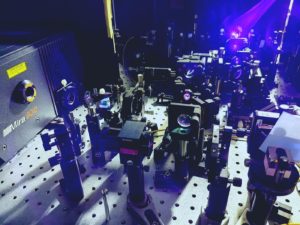In the Lego movie a master builder possesses the jedi like powers of being able to construct different getaway vehicles such as flying couches simply by cobbling together stray blocks and repurposed parts of existing structures. These constructions are only limited by the master builder’s imagination (ok and some engineering principles on the limits of structural integrity!). However such incredible power is enabled by a very subtle type of technology known as modularity – which enables us to Plug n’ Play snapping different blocks together in a myriad of combinations. Modularity is a classical design principle that allows different pieces, like Lego blocks, to be constructed independently and then connected via a standardized interface – here all the Lego blocks have the same pattern of bumps and holes so even if the blocks all come from different specialty sets (and perhaps have very different shapes and functionalities) they can be interconnected using this interface.

Stepping back from the Lego universe, Modularity is extremely pervasive in our society and technology. Its uses extend from simple things like modular furniture, all the way up to complex computer code, and the way in which we interface with a could service online via an Application Programing Interface -- an interface (like the holes and bumps in the Lego blocks) that allows us to connect to and offload parts of a computation or service to a remote server. In the real world this gives us a power similar to a master builder’s – we can independently update different parts of a device, or freely exchange servers.
Modular architectures, however, get a it trickier when we start computing quantum mechanically. In particular, quantum computers draw much of their power from quantum superposition and entanglement. A quantum bit can simultaneously 0 or 1, Moreover, two qubit can have their realities entangled so that both are simultaneously in 0 of 1 at the same time. To get the full power of quantum computing in a collaborative setting, we would need these properties maintained between server a client. Could a client, for example, outsource a sever to perform function 1 and perform function 2 simultaneously in quantum superposition, and moreover have this action entangled with a quantum bit in her computer? It turns that present ways to realize such feats fundamentally conflict with modular design. To upgrade one party of a a collaborative quantum computation, all parties are affected. Thus individual components can no longer be interchanged in a Plug n’ Play architecture.
However joint experimental work between researchers are NTU, Tsinghua University and NUS has developed a prototype API that sidesteps this problems. The work, appearing in [Nature Communications 10, 4692], is based on a theoretical architecture first proposed by a theoretical team led by Mile Gu in 2018. The prototype was realized in a trapped ion quantum computer, where the team demonstrated the use of the quantum API to implemented a distributed form of a quantum algorithm known as DQC1 - which promises the capacity to efficiently compute a class of functions that are intractable using classical counterparts




